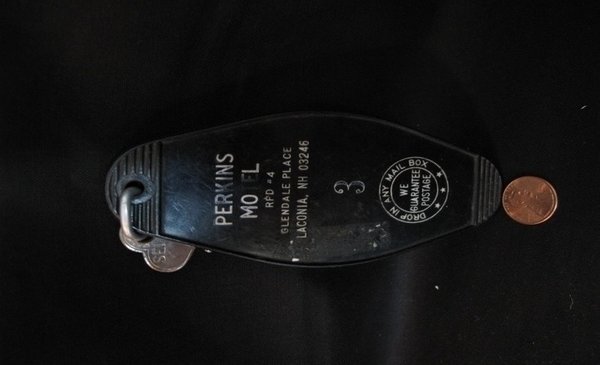
Joshua Glenn and Rob Walker are two writers who collaborated on a literary and economic experiment between 2009 and 2010, to discover whether adding meaning to an object would draw attention and sway people to buy it for more money than it’s worth.
They bought knickknacks at thrift stores for a total of $129. They paid no more than $2 per object and asked various professional writers to compose a story for each object. Then they posted each item with its story on eBay and watched what happened.
A beat-up motel room key cost them $2. The story, written by novelist Laura Lippman, began with a wife putting away her husband’s knickknacks. She asked him why he had kept the key for so many years. On the key was engraved Perkins Motel, Laconia, NH, Room 3. The husband replied that the key reminded him of the movie Psycho (the actor’s name was Anthony Perkins, which he thought “was cool”). When the wife was unimpressed, he mentioned a trip to that motel with a “bunch of guys” in junior college and he forgot to return the key and has had it since. “Here’s the moment where you choose to believe, or not to believe,” the wife reflects. “A marriage is a kind of religion, defying rational thought.” She realized that motel rooms no longer use traditional keys anymore, even in Laconia, New Hampshire. Whatever memory her husband treasured may have been beyond one shared with a “bunch of guys.” She wondered if he wanted to keep the story to himself, for her sake or his, and not spoil what may have happened in Room 3.
The key sold for $45.01.
The writer Ben Ehrenreich tells the story about a jar of marbles and starts with an irresistible statement: “I pull a marble from your skull each time we kiss. ‘Give it back,’ you say, each time.” The rest of the story is a surreal dialogue between two people during which we move from hunchbacks, to Noam Chomsky, to Beyoncé, to the narrator’s lover arranging TV remotes attractively, to Vladimir Putin in the form of a crow, being the narrator’s friend on Facebook. When we get to the final scene, we are left with this paragraph to ponder: “And I kiss your fingers and your dry lips and with my free hand I reach up and I stroke your hair and I poke about until I feel the bulge and then I dig in with my nails and pull another marble from your skull.”
The jar of marbles was bought for $1 and sold for $50.
Overall, the Significant Object project made $8,000 and beautifully illustrates the impact of meaning in making decisions.
Reflecting on your own content whether it be a presentation, blog, marketing campaign or training program consider this: At any moment, the world is filled with sights and sounds that simultaneously compete for your listeners’ attention. The human mind is limited in its ability to process information and selects only relevant stimuli that receive priority for further processing. In a world of constant data explosion, how do we create meaningful content that leads to recall and influences decisions?
Give your audiences the thrilling relevance of Room 3.
To Do That Consider These Nine Steps To Distinctiveness:
1. Distinctiveness is important for long-term memory because isolated items draw more attention and rehearsal time. In addition, isolated items come to the foreground, reducing interference with other items, and also appear in smaller numbers, which makes them easier to recall long term.
2. The more similar things are, the harder it will be to retrieve them later. However, similarity is important for the brain to detect distinctiveness.
3. The brain is constantly looking for rewards. In business, when many messages are the same, we can create distinctiveness, and therefore improve recall, by being specific about these rewards, which we can frame as tangible results.
4. If you’re not first to market, observe pockets of similarity in your domain and then strike with distinctiveness. Allow your audiences’ brains to habituate to similarity; it will be easier for your message to stand out.
5. The more an item differs from other items, the bigger its effect. Select a property you want to isolate and increase its distinctiveness by at least 30% compared with neighboring items.
6. Find opportunities to deviate from a reality your viewers have learned to expect.
7. Create distinctiveness by thinking in opposites. This is helpful not only because it helps the brain distinguish some stimuli more strongly than others, but also because contrast is a shortcut to thinking and decision-making
8. Enable self-generated distinctiveness.
9. Achieve distinctiveness with a human touch and deep meaning.
Contributed to Branding Strategy Insider by: Carmen Simon, PhD, co-founder of Rexi Media and the author of Impossible to Ignore: Creating Memorable Content to Influence Decisions
The Blake Project Can Help: The Brand Storytelling Workshop
Branding Strategy Insider is a service of The Blake Project: A strategic brand consultancy specializing in Brand Research, Brand Strategy, Brand Licensing and Brand Education
FREE Publications And Resources For Marketers











